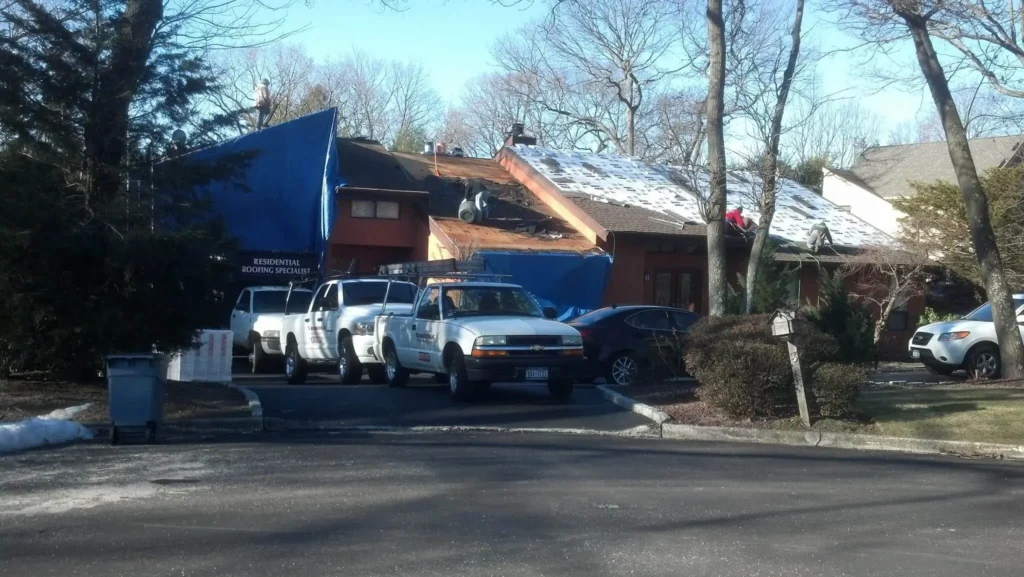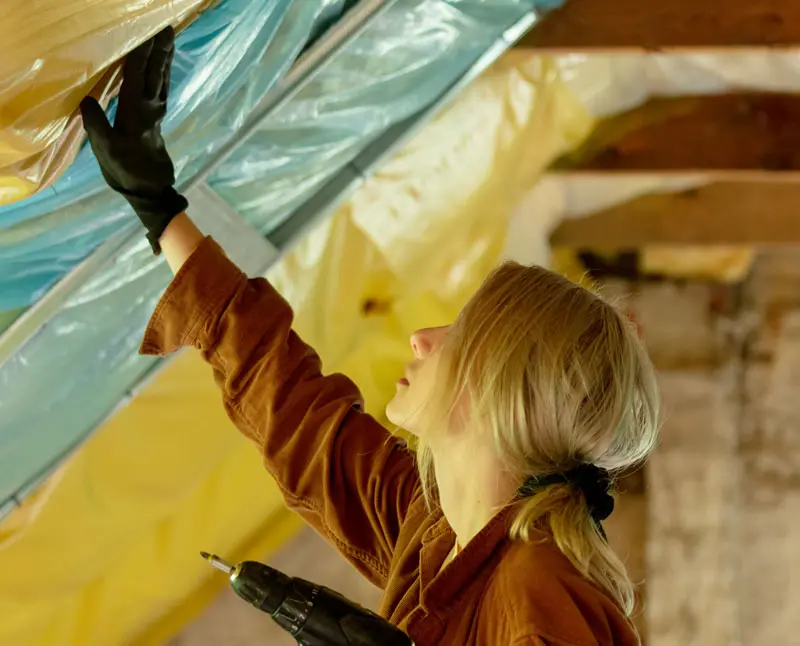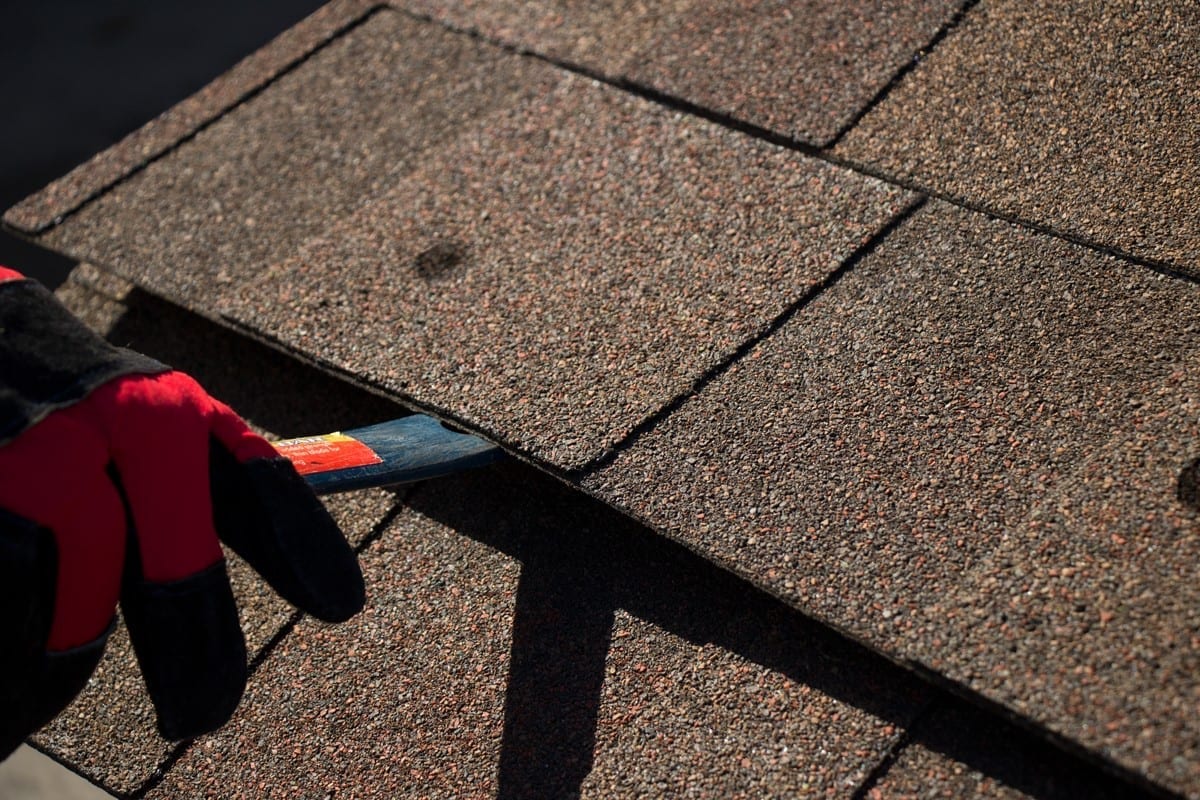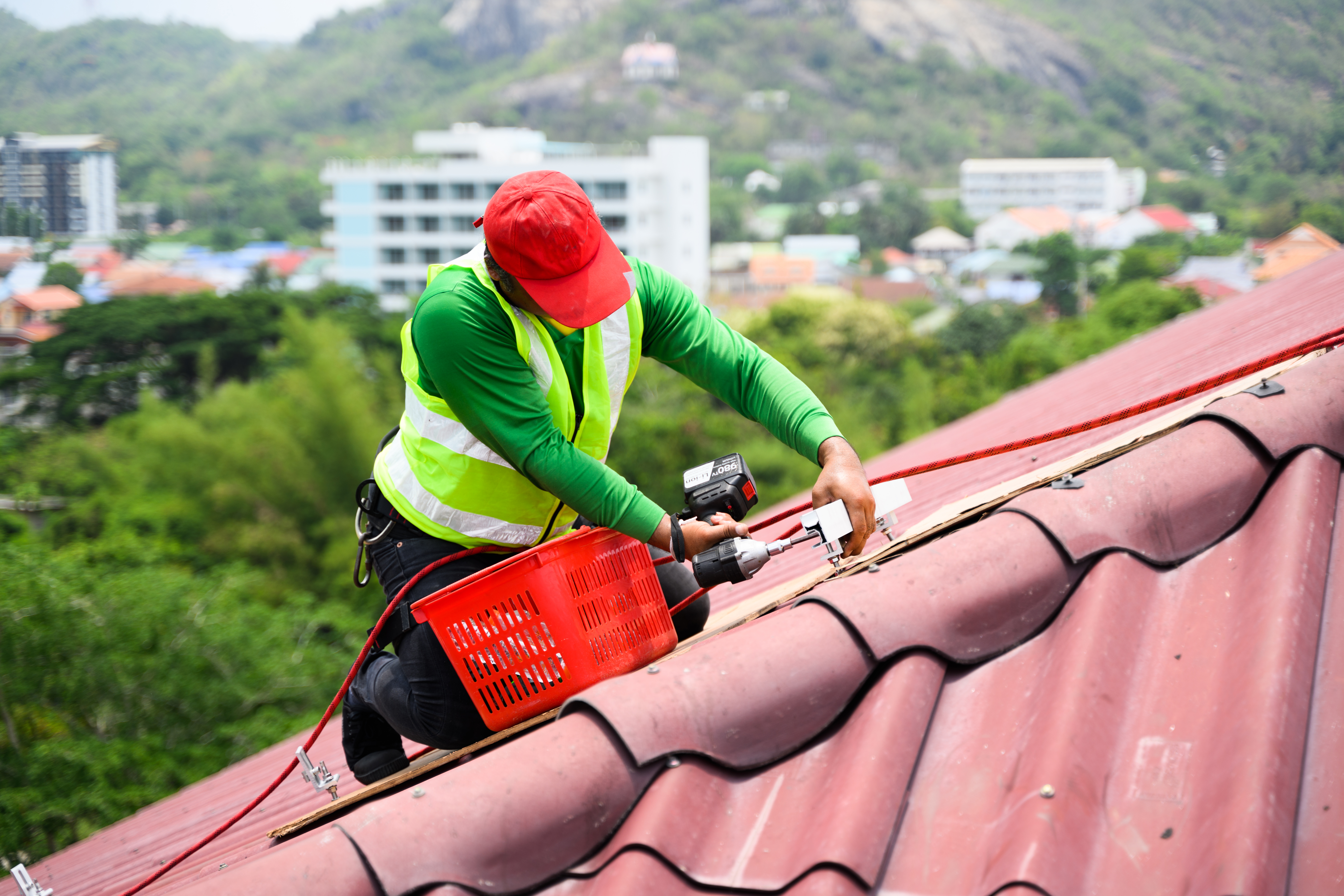What Causes Roof Leaks: Common Problems Explained
Understanding what causes roof leaks helps homeowners identify problems before they become expensive disasters. Roof leaks can develop from multiple sources, creating ceiling water stains and structural damage throughout your home.
Most residential roof leaks stem from three primary culprits: damaged flashing, compromised shingles, and poor drainage systems. These issues often develop gradually, making early detection crucial for preventing extensive interior damage.
Professional roof inspection can identify potential leak sources before they cause significant problems. Licensed roofers understand how different roofing materials fail and which areas require the most attention during routine maintenance.
Cracked Flashing Is a Common Leak Culprit
Roof flashing issues represent the leading cause of residential roof leaks across Suffolk County. Flashing consists of thin metal strips installed around roof penetrations, valleys, and joints to redirect water away from vulnerable areas.
Over time, flashing expands and contracts with temperature changes, creating stress fractures that allow water infiltration. Poor installation techniques during original construction often contribute to premature flashing failure and subsequent leak development.
Chimney flashing leaks occur frequently because these installations require complex waterproofing around irregular surfaces. The connection between different materials creates multiple potential failure points that require expert attention.
Metal Flashing Deterioration Patterns
Galvanized steel flashing typically lasts 15 to 20 years before rust compromises its water-shedding capabilities. Aluminum flashing offers better corrosion resistance but can develop fatigue cracks from thermal movement over time.
Step flashing along roof-to-wall intersections often fails when caulk joints deteriorate or shingles shift position. These small gaps allow water to penetrate behind the flashing, creating hidden damage inside wall cavities.
Valley flashing experiences concentrated water flow during storms, making it particularly susceptible to wear and damage. Professional roof repair specialists can identify early warning signs before complete flashing replacement becomes necessary.
Vent Pipe Flashing Problems
Cracked vent pipes and their surrounding flashing create common entry points for water infiltration. Rubber boot seals around plumbing vents deteriorate from UV exposure and temperature extremes, typically requiring replacement every 5 to 10 years.
HVAC penetrations require specialized flashing systems that accommodate larger openings and equipment vibration. Improper sealing around these installations can create significant leak sources that affect multiple interior areas simultaneously.
Attic moisture buildup often results from failed vent flashing, creating secondary problems including mold growth and insulation damage. Emergency roof services frequently address these urgent situations during severe weather events.
Clogged Gutters Can Lead to Roof Damage
Clogged gutter systems cause water to back up under shingles, creating leaks along the roof edge and fascia boards. This problem intensifies during heavy rainfall when drainage capacity becomes critically important.
Ice dam formation during winter months results from poor attic insulation and inadequate ventilation combined with blocked gutters. These conditions create standing water that finds entry points through normal roof materials.
Regular gutter cleaning prevents most drainage-related roof problems. Homeowners should inspect and clean gutters at least twice annually, with additional attention following major storms or heavy leaf seasons.
Fascia Board Water Damage
Extended gutter overflow saturates fascia boards and soffit materials, creating rot and structural weakness. This damage often spreads to roof decking and interior walls if left unaddressed by professional contractors.
Damaged roof decking requires immediate attention to prevent further structural compromise. Water-saturated plywood or OSB sheathing loses structural integrity and may require complete replacement during roof repairs.
Localized roofing services can assess the extent of water damage and recommend appropriate repair strategies. Early intervention typically costs significantly less than addressing extensive structural problems after prolonged exposure.
Downspout and Drainage Issues
Inadequate downspout capacity creates water backup that affects the entire gutter system performance. Properly sized downspouts should handle one square inch of opening for every 100 square feet of roof area.
Foundation drainage problems can result from improper downspout discharge, creating basement flooding and structural settlement issues. These problems often require coordination between roofing contractors and foundation specialists.
Storm damage repair frequently involves gutter system restoration following severe weather events. Hail damage, falling branches, and high winds can compromise gutter functionality and create immediate leak risks.

Worn Shingles Often Cause Interior Leaks
Missing shingles expose the underlying roof deck to direct weather exposure, creating immediate leak potential. Wind damage commonly lifts or removes individual shingles, particularly along roof edges and ridge areas.
Asphalt shingle cracks develop from age-related brittleness and thermal cycling stress. Most asphalt shingles show signs of deterioration after 20 to 25 years, depending on climate conditions and installation quality.
Seasonal roofing wear accelerates in areas with extreme temperature variations and severe weather patterns. Suffolk County’s coastal climate presents unique challenges including salt air exposure and nor’easter storm systems.
Age-Related Shingle Deterioration
Roof age factors significantly influence leak probability and repair requirements. Shingles lose granules over time, reducing their water-shedding effectiveness and exposing the underlying mat material to UV damage.
Curling and cupping occur as shingles lose flexibility, creating gaps that allow wind-driven rain penetration. These conditions typically appear first on south-facing slopes that receive maximum sun exposure.
Roof maintenance tips include regular visual inspections for missing, damaged, or displaced shingles. Homeowners should schedule professional evaluations when they notice granule accumulation in gutters or visible shingle deterioration.
Flat Roof Leak Challenges
Flat roof leaks present unique diagnostic challenges because water can travel considerable distances before appearing as interior damage. Membrane systems require specialized repair techniques and materials different from traditional sloped roofing.
Ponding water on flat roofs accelerates membrane deterioration and creates persistent leak sources. Proper drainage design and regular maintenance prevent most flat roof problems from developing into major issues.
Commercial roofing problems often involve complex flat roof systems that require experienced contractors familiar with membrane installation and repair techniques. These repairs typically demand immediate attention to prevent extensive interior damage.
Tom Jannace Solves What Causes Roof Leaks Fast
Tom Jannace Roofing, Inc. has served Suffolk County since 1990, providing expert solutions for residential roof inspection and repair needs. Our experienced team understands the unique challenges that Long Island weather conditions create for roofing systems.
We offer comprehensive roof inspection services that identify potential leak sources before they cause interior damage. Our thorough evaluation process examines flashing, shingles, gutters, and ventilation systems to ensure complete roof system integrity.
Located in Stony Brook, we serve the greater Suffolk County area with emergency roof services and scheduled maintenance programs. Our local knowledge helps us anticipate and address region-specific roofing challenges effectively.
Professional Roof Repair Services
Our residential roof repair services address all common leak sources using proven techniques and quality materials. We handle everything from minor shingle replacement to complete roof system restoration following storm damage.
Storm damage repair requires immediate response to prevent further interior damage and security issues. Our team provides emergency tarping services and permanent repairs that restore full roof protection quickly and professionally.
Trusted roofing experts understand that roof seal failure can occur at multiple points simultaneously. We conduct comprehensive repairs that address all identified problems rather than applying temporary fixes that fail repeatedly.
Quality Materials and Installation
Improper roof installation creates long-term problems that often require complete system replacement. Our installation team follows manufacturer specifications and industry best practices to ensure maximum roof system longevity.
Hail damage roofing repairs require careful assessment to identify all affected areas, including subtle damage that may not be immediately visible. We work directly with insurance companies to ensure complete restoration coverage.
Roofing contractor near me searches often lead homeowners to our established Suffolk County presence. Our local reputation reflects decades of quality work and satisfied customers throughout the region.
Our commitment to excellence extends beyond immediate repairs to include comprehensive roof maintenance tips and preventive care recommendations. We help homeowners understand their roof systems and recognize early warning signs of potential problems.
Experiencing roof leak problems or need professional inspection services? Contact Tom Jannace Roofing, Inc. at (631) 751-4734 for expert diagnosis and reliable repair solutions that protect your Suffolk County home from water damage and structural issues.








